
by: SEO Strategist
Ashot Nanayan
Ashot Nanayan is the CEO and Founder of DWI and a seasoned SEO strategist. With a proven track record of...
All Articles by Ashot Nanayan
October 29, 2025
8 min. read
Lately, my LinkedIn feed has turned into a flood of “LLM optimization” advice from self-proclaimed SEO and digital marketing experts. Every other post seems to promise the secret to appearing in ChatGPT, Perplexity, or Google’s AI Overviews. But when you read them closely, most of these so-called techniques are nothing more than a recycled SEO checklist: write in-depth content, add FAQs, use H2s, include structured data, and so on.
That’s why I decided it’s finally time to share my own experience; real lessons from optimizing SaaS websites that now appear in AI-powered search results. I’ll talk about what worked for me, what didn’t, and how SaaS founders can approach this new search environment with clarity instead of confusion.
If you’re looking for a trusted SaaS SEO agency, feel free to reach out to us today. We’ll show you how to grow your visibility in Google and AI search.
LLM search optimization is the process of making your brand or content recognizable and trustworthy enough to be mentioned, summarized, or recommended by large language models like ChatGPT, Perplexity, Gemini, or Google’s AI Overviews.
In simple terms, instead of optimizing only for search engines, you’re optimizing for how machines understand your brand, how they connect your content to certain topics or industries, and how confidently they can use your website as a reference when generating answers.
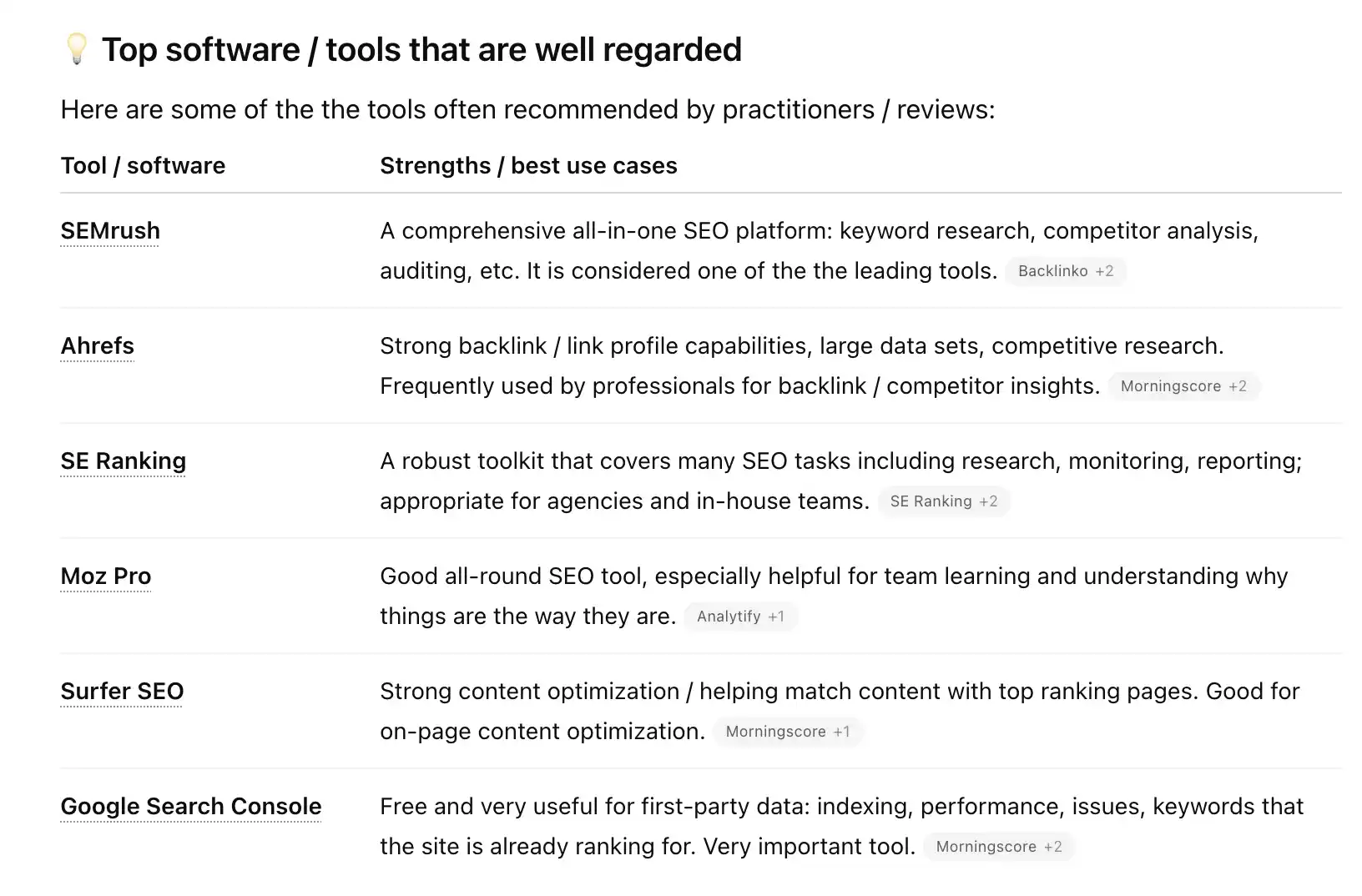
If a language model repeatedly sees your brand’s content across reliable, relevant, and high-authority sources, it learns to associate your name with expertise. That’s when it starts recommending you.
Related article: Top 10 AI-Powered SEO Services: Are They Worth It?
We all know that SaaS companies rely on organic discovery; potential users searching for solutions, comparing alternatives, and evaluating trust signals before they even sign up for a demo.
But in 2026, that discovery journey is shifting fast. Users are no longer typing “best project management tools” into Google and scrolling through ten blue links. They’re asking ChatGPT or Perplexity, and getting curated, summarized answers from a handful of sources that these systems trust.
If your brand isn’t visible in those responses, you’re invisible to a growing part of your market. It’s that simple.
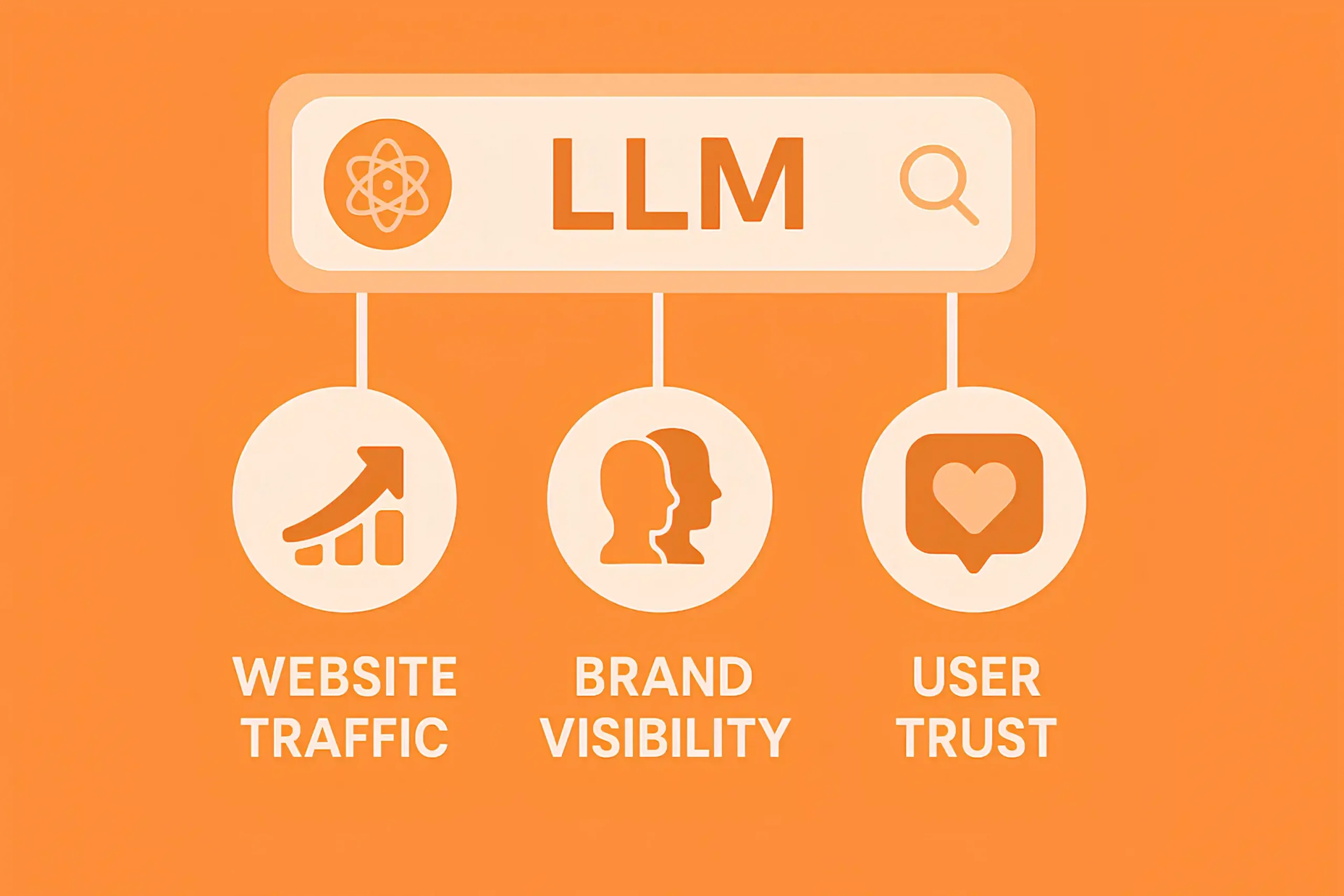
LLM search isn’t replacing SEO, but it’s rewriting how credibility is judged. For SaaS, this means going beyond traditional keyword optimization and focusing on building real topical authority: content that gets referenced by reputable sources, industry blogs, and even your competitors’ discussions.
The SaaS brands that adapt early will dominate search and AI-driven discovery. The ones that don’t will watch their traffic and sign-ups slowly drift toward companies that these models already “know.”
Before diving into the specific techniques, I want to make something clear: what I’m about to share isn’t a list of the same SEO tactics you’ve already heard a hundred times.
These are the strategies I’ve personally tested and refined through SaaS projects; the ones that helped our clients appear in ChatGPT, Perplexity, and other LLM-powered results.
Every technique here comes from hands-on experience, not a kind of “best practices.” So if you’re serious about helping your SaaS brand stand out in AI search results, these are the techniques worth paying attention to.
If you’re also looking for a deeper, full-scale approach to SaaS SEO, I’ve already written a complete guide on it that covers everything beyond LLM search.
From my own experience, one of the most effective ways to appear in ChatGPT, Copilot, Gemini, and other LLM-generated results is to secure placements in high-quality listicles.
I’ve tested this across several SaaS projects and found that when your brand is mentioned in multiple reputable list-style articles, like “Top B2B SaaS SEO agencies” or “Best Project Management Tools”, LLMs are far more likely to recognize and reference you.
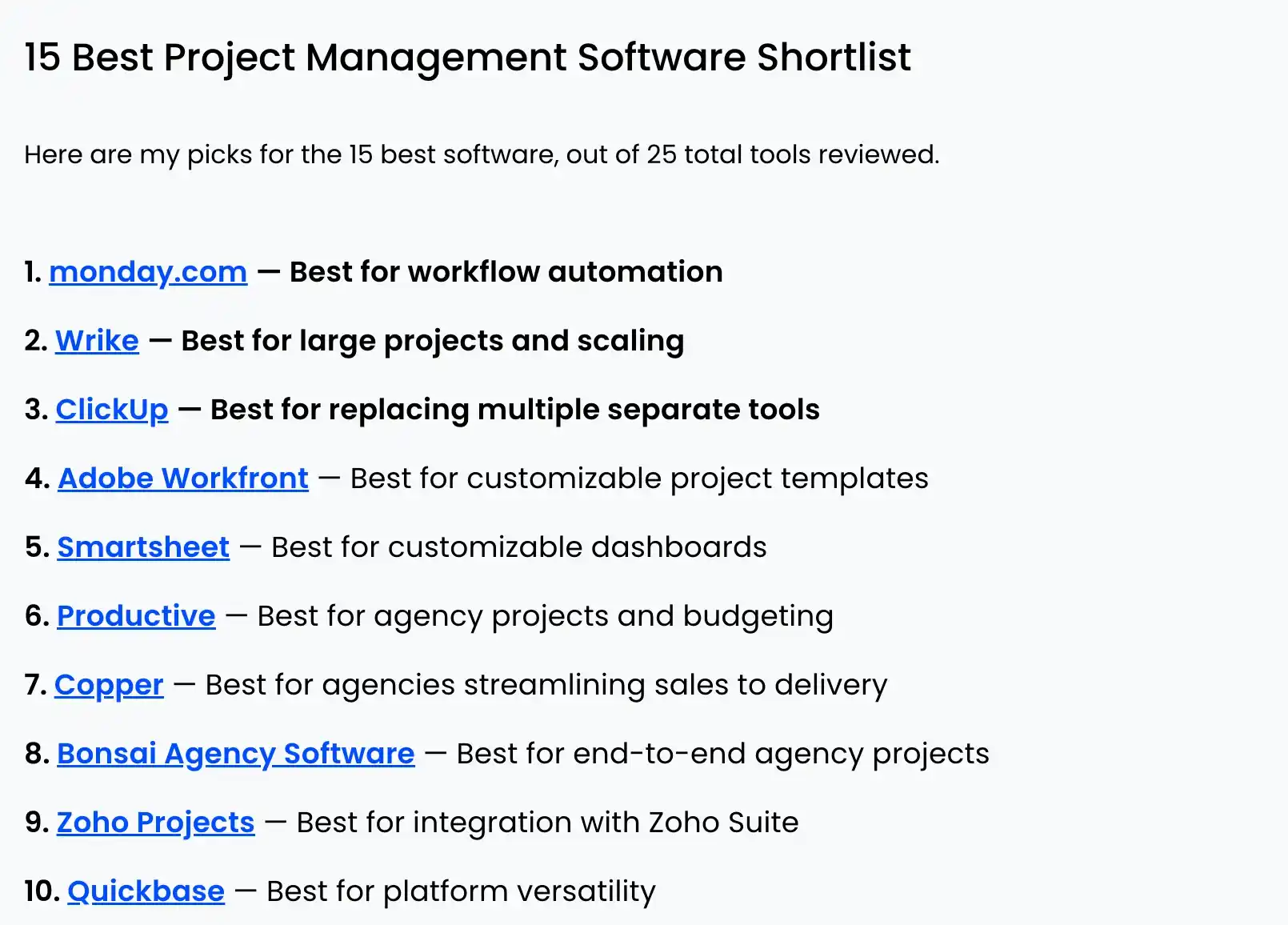
The reason is simple: large language models don’t crawl the entire web as Google does. They rely on trusted sources and curated lists when forming their answers. So, if ChatGPT sees your brand featured in several authoritative listicles, it starts associating your name with credibility in that category.
The more often that happens, the more confident it becomes in recommending you.
Here’s how I approach it.
First, go to ChatGPT, Gemini, or Perplexity and search exactly as your customers would; for example, “top AI video generator tools.”
Then, analyze which websites and articles these models use as their main sources.

Those are the places you want to appear.
Reach out to those site owners, editors, or contributors, and ask if they can include your SaaS in their existing list.
If that’s not possible, take the second route, create your own guest posts or collaborations with credible publications. Offer them a high-quality listicle where your SaaS appears naturally in the top position.
This way, you don’t just depend on others to rank you; you build the content that LLMs eventually learn from.
Both traditional search engines and LLM-based systems rely on brand reputation. But how they interpret “reputation” isn’t identical. In Google’s world, backlinks still play a major role; easily 60% or more of the weighting when it comes to authority signals.
But from what I’ve seen, backlinks alone don’t fully define reputation in the context of LLM search.
For LLMs, brand reputation is about visibility, consistency, and credibility across multiple touchpoints. That means not just backlinks, but mentions, even unlinked ones. Running digital PR campaigns, HARO link-building, or earning brand mentions in niche media can make a huge difference.
Another overlooked factor is the reputation of the people behind the brand. If your founder, co-founder, or CEO has published thoughtful content, interviews, or expert insights, especially on platforms like LinkedIn or industry blogs, it extends to the company itself.
I’ve even noticed that when founders are quoted or featured consistently, LLMs tend to treat the brand as more trustworthy.
Some people dismiss platforms like Quora or Reddit, but I wouldn’t. In my experience, genuine participation still helps create a positive reputation footprint with minimal effort or investment.
Even if it doesn’t bring direct traffic, it reinforces your brand’s presence across diverse data sources that LLMs read from.
Finally, don’t ignore business directories, especially if you’re running B2B SaaS SEO campaigns. Being listed on platforms like Clutch, G2, Trustpilot, and even Google Business Profile can significantly improve perceived reputation.
Collect real reviews, maintain your listings, and make sure your brand looks active and reliable everywhere it appears.
Once this foundation is in place, brand reputation becomes one of your strongest factors for visibility, not just in Google, but across the emerging landscape of AI-driven search.
Consistent, high-quality content and contextual backlinks are two sides of the same coin. That’s what our SaaS link-building services focus on: securing editorial links that support your brand reputation and help you appear in AI recommendations.
Brand mentions are powerful, not just for SaaS, but for any business trying to earn visibility across traditional and AI-driven search results. Whether you’re aiming to rank on Google or appear inside ChatGPT’s answers, brand mentions help position your company as an authority that’s being talked about, referenced, and trusted.
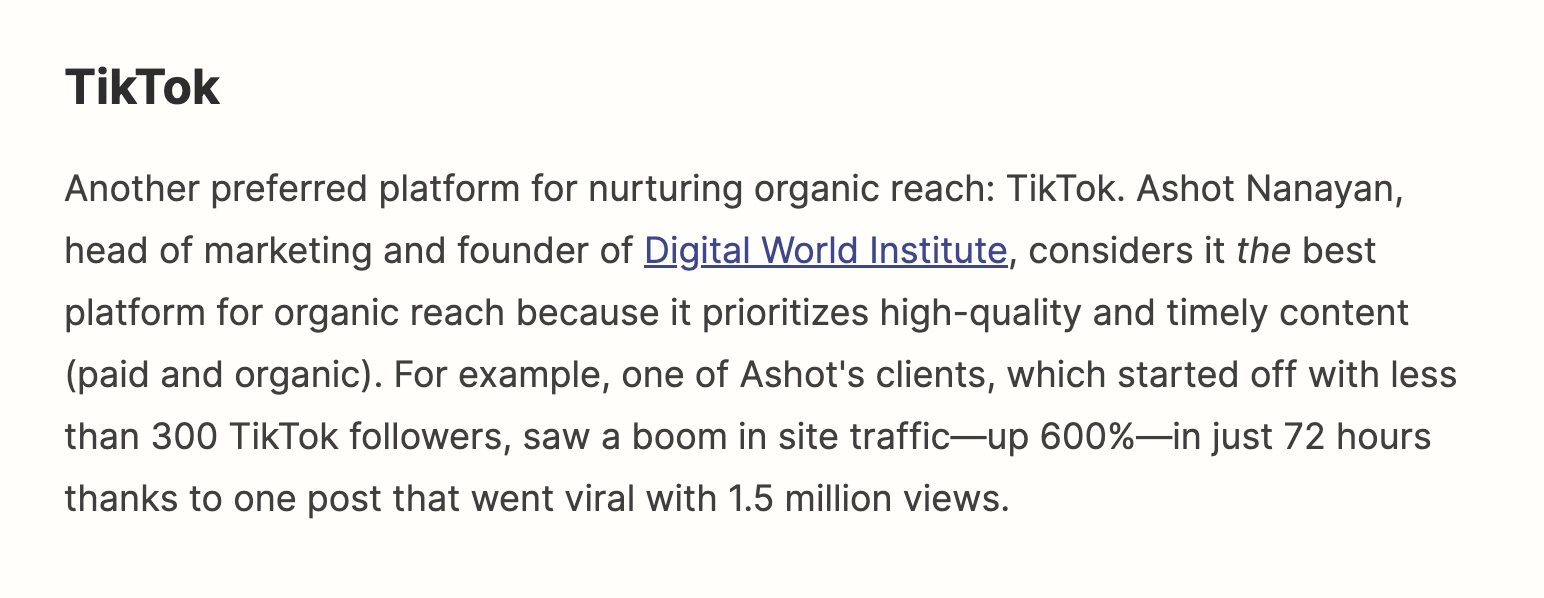
As I already mentioned in the previous section, LLMs value reputation, and brand mentions are one of the strongest signals of that. They appear in different forms, maybe your company name in a media article, a quote from your founder, or even a mention in an industry roundup without a clickable link.
These small details collectively tell search engines and AI models that your brand is part of the conversation.
Based on my experience at Digital World Institute, some of the fastest and most scalable ways to build brand mentions are through well-planned digital PR campaigns.
Not the old “press release” kind, I mean creative, story-driven PR campaigns that attract coverage from journalists and niche publishers.
You can also combine PR with SaaS link-building strategies. Even when the link isn’t dofollow or sometimes not clickable at all, the mention itself still adds value to your brand’s recognition footprint.
The same applies to participating in industry events, webinars, or online discussions. Each one increases the number of touchpoints where your brand name appears, and over time, that’s what helps you become recognizable to both Google and LLMs.
ChatGPT’s “Search” feature (sometimes referred to as SearchGPT) relies on Bing’s web index as its primary source for real-time web results. Studies have shown that a large percentage of ChatGPT’s citations (i.e., the external pages it references in answers) come from pages that rank well in Bing’s organic results.
One analysis found ~ 87% of SearchGPT citations match Bing’s top organic results.
So yeah, if you’re serious about appearing in ChatGPT’s results, start by optimizing for Bing.
Make sure your site is properly indexed, your sitemaps are submitted, and your technical setup is clean.
Bing tends to reward well-structured, clear, and trustworthy content, and it uses signals like author reputation, backlinks, and brand mentions, much like Google does, but often gives extra weight to transparency and credibility factors such as clear contact pages, external citations, and active brand profiles.
The better your performance in Bing, the higher your chance of being picked as a source when ChatGPT builds its summaries.
So, if you’ve been focusing only on Google until now, it’s time to expand your SEO foundation.
Related article: 15 Smart Ways to Use ChatGPT for SEO
Sooner or later, AI search engines like Google’s AI Overviews and ChatGPT will completely take over the top of the funnel. Generic, recycled content, the kind that’s rewritten a hundred times by different blogs, will disappear from visibility.
You won’t see it in LLM recommendations, and you definitely won’t get cited by them.
The reason is simple: these models are becoming increasingly intelligent. They don’t need the same “safe” information repeated across thousands of pages. They need substance; something they can learn from.
That’s why now is the right time to shift your focus from keyword-driven writing to original research.
In my experience, original research content performs extremely well both in Google and in AI-powered systems. It naturally aligns with Google’s E-E-A-T principles: expertise, experience, authority, and trust, while feeding LLMs the kind of information they can’t find elsewhere.
So if you’re optimizing your SaaS for LLM search, treat original research as your hidden advantage, and while others keep recycling blog posts written for algorithms, you’ll be the one creating material that LLMs respect and reference.
You might also be interested in exploring our detailed SaaS SEO case studies, where I share real examples of strategies and experiments that led to measurable growth in traffic, rankings, and brand visibility.
Structured data, in simple words, is a piece of code that helps search engines and AI systems understand what your content actually means, not just what it says. It’s like giving search engines a short, direct explanation of your page’s purpose, so they can categorize it correctly and connect it to the right entities.
Structured data was originally created for traditional search engines like Google and Bing, but it’s becoming increasingly important for LLMs, too. When ChatGPT or other AI models scan information, they rely on structured signals to better identify what your company does, who’s behind it, and what kind of topics you’re an authority on.
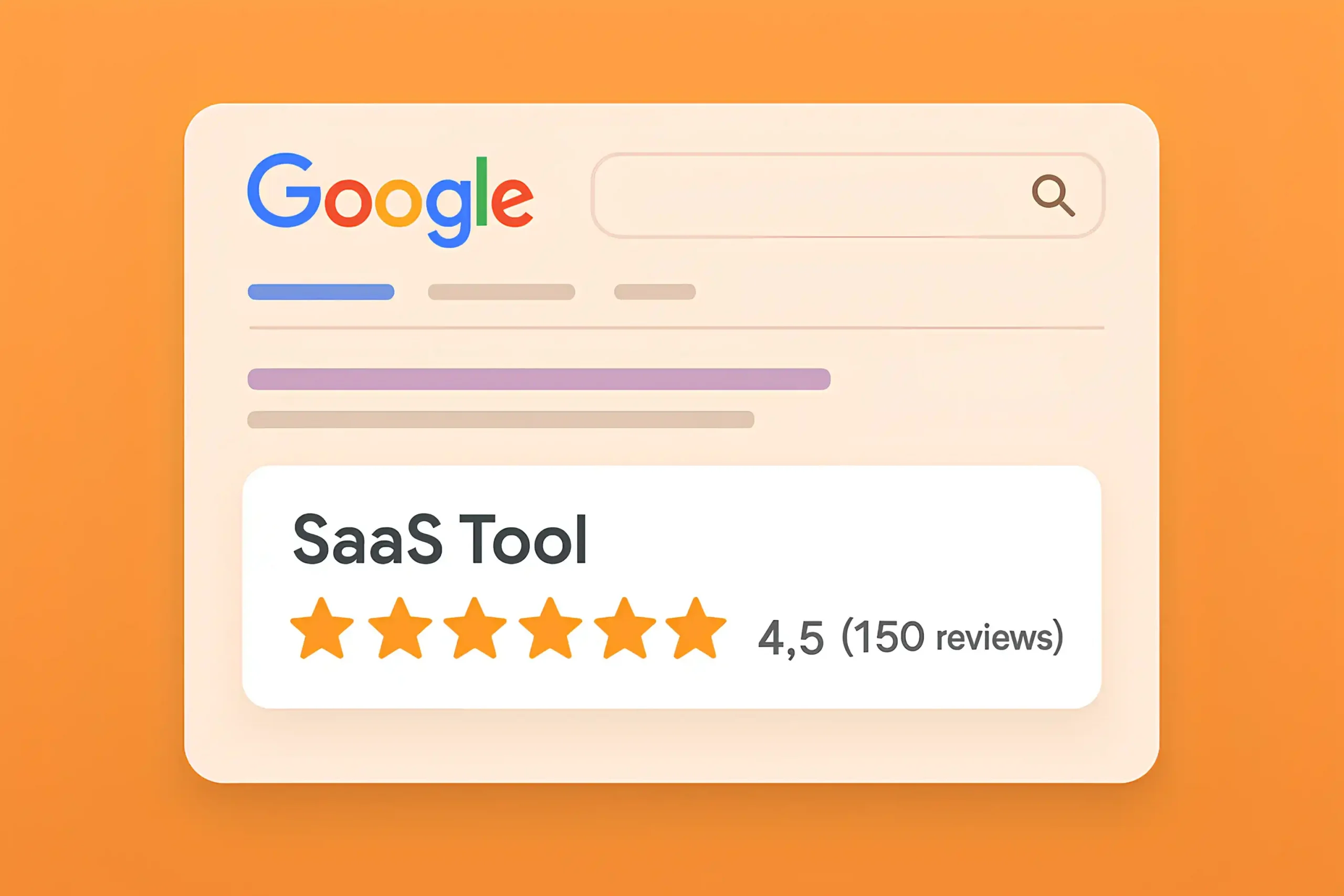
The more clearly your data is organized, the easier it is for these systems to “learn” and reference your brand confidently.
For SaaS websites, the best types of structured data include Organization, Product, SoftwareApplication, FAQ, and Review schema. These help traditional search engines and AI search systems recognize that you’re a legitimate software provider, understand what your tool does, and even interpret user feedback as part of your credibility footprint.
Structured data also helps strengthen your brand’s entity profile, something LLMs use when deciding which companies to recommend or reference.
If you’d like to go deeper into the technical side of this topic, I’ve written a detailed post on technical SEO for SaaS, where I also explain how to generate the right schema markup for your SaaS website and include it correctly.
One of the strongest signals for both search engines and LLMs is topical authority, proving that your SaaS brand owns a subject, not just touches it.
For one of our clients in the AI video generation space, we built a full content hub around faceless video creation. We covered every angle: faceless YouTube videos, faceless video blogs, faceless video tools, faceless video editing; all tightly connected around the same core topic.
Most of this content sat in the mid-funnel stage, addressing real user intent. Over time, the website started dominating almost every major keyword in that category.
What was even more interesting was the next step: we began noticing consistent traffic from ChatGPT, Copilot, and Gemini.
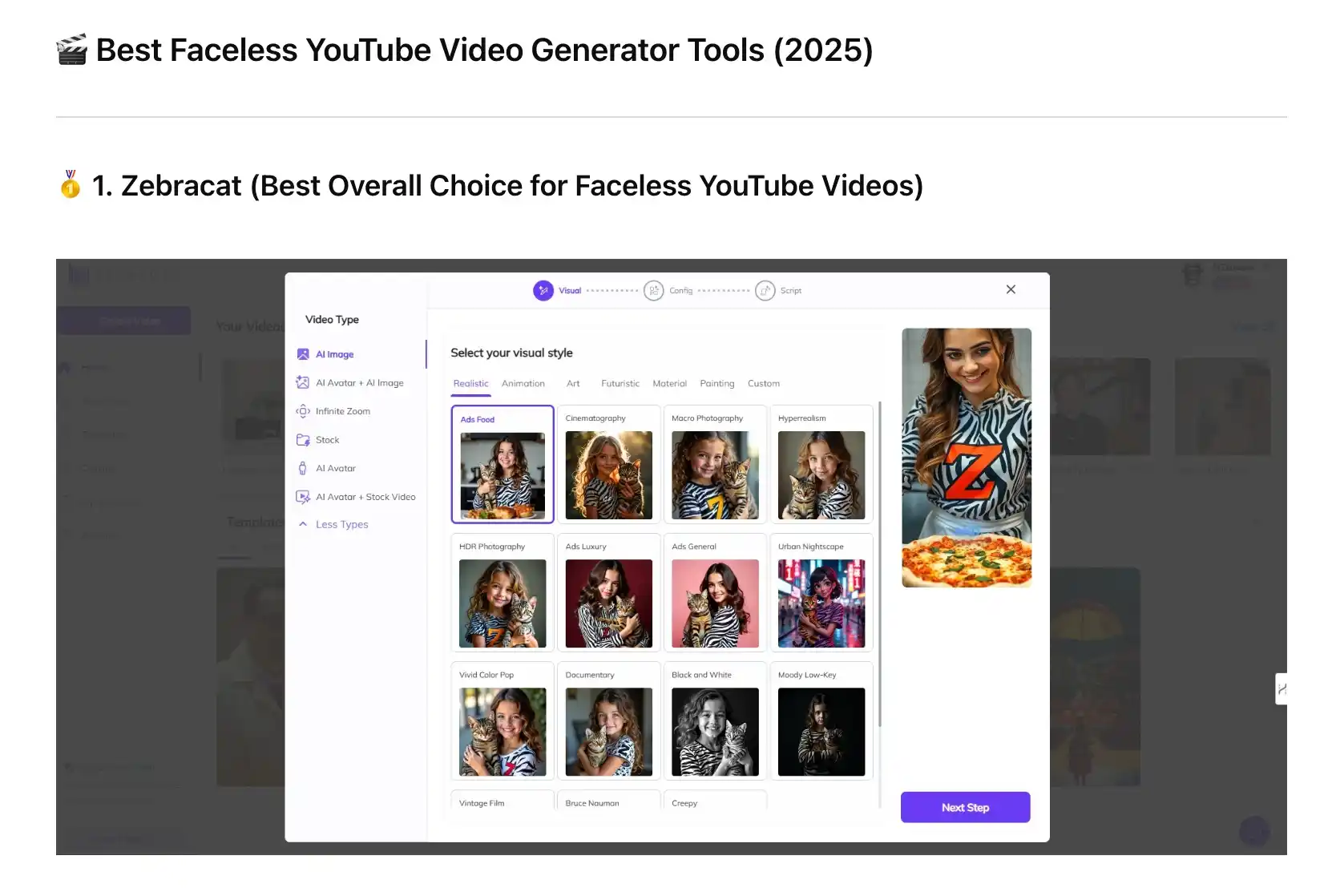
Those LLMs were picking up our pages as credible references whenever users asked about tools for faceless video creation or YouTube productivity.
That’s when it became clear that building topical authority doesn’t just help with Google; it also directly influences how LLMs perceive and recommend your brand.
Pro tip: Don’t just rely on keyword tools; traditional keyword research often misses the real intent behind SaaS searches.
Focus instead on how your audience searches during their buying journey, especially at the problem-awareness and solution-comparison stages.
If you want a complete walkthrough of this approach, I’ve already published a SaaS keyword research guide that explains how to build topic clusters the right way with examples and internal linking strategies that work.
If you’re optimizing your SaaS for LLM search (especially in tools like ChatGPT, Gemini, or Perplexity), creating YouTube videos is becoming a strategic asset.
Videos come with rich transcripts, metadata, titles, descriptions, and captions, giving AI systems structured text to take from. When you publish a video on YouTube, you automatically generate text that describes what you said. LLMs can use that transcript (whether auto-generated or manually uploaded) as reference content.
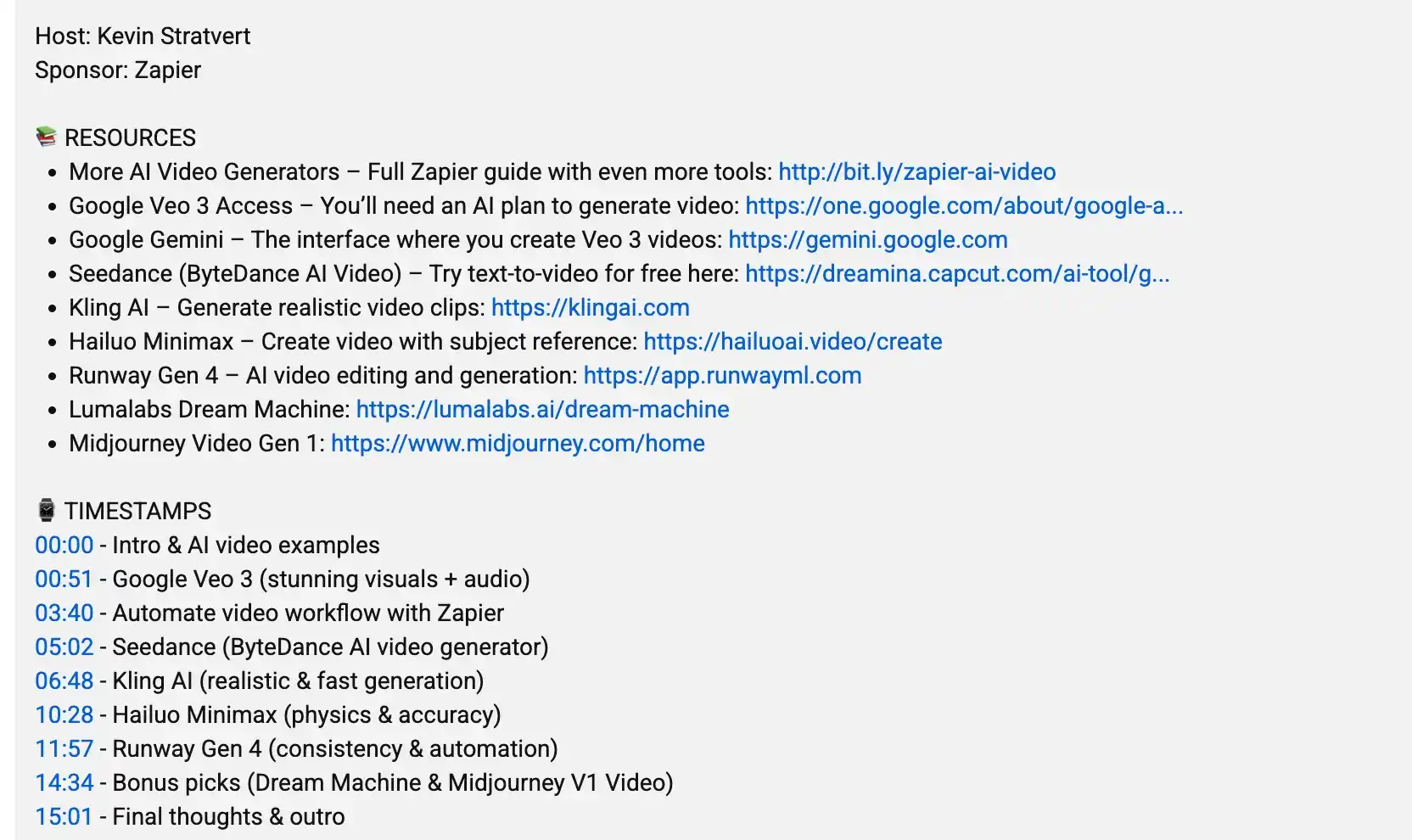
There are large datasets composed of YouTube transcripts used to train or fine-tune language models. That means many models already ingest videos as text data.
YouTube remains massively popular. With billions of monthly active users and huge amounts of video content being uploaded, it is one of the largest sources of web content.
Finally, that’s because videos are often evergreen (especially explainer or SaaS-demo style videos), and transcripts remain useful over time. LLMs may reference your content long after you publish, meaning your video can add to your brand’s authority for months or years.
You can also embed YouTube videos directly into your bottom-of-the-funnel articles: pages like comparison posts, pricing breakdowns, or case studies.
This works almost ten times better because it gives both users and AI crawlers a richer signal of expertise, engagement, and topical relevance.
The combination of long-form text and contextual video builds trust faster than text alone.
LLMs rely on accessible, clearly structured HTML and metadata. Unlike Google’s crawler, which can render JavaScript-heavy sites relatively well, most AI crawlers and web-scrapers still struggle with complex front-end frameworks or lazy-loaded content.
If your SaaS site hides critical text behind animations or requires user interaction to display product descriptions, chances are high that LLMs can’t “read” it.
Platforms like Webflow, Framer, and Squarespace are popular because they simplify design, but they can also complicate visibility.
For example, Webflow sites sometimes use dynamically injected text layers or pseudo-elements (::before /:: after) for styling. These look perfect visually but are invisible to crawlers and AI parsers.
So, if you’re using Webflow or similar tools, always verify that your text-based content exists in the actual DOM. Avoid hiding primary content inside CMS filters, sliders, or custom code blocks that require interaction to load.
Related article: Webflow SEO for SaaS
A common myth is that page speed or Core Web Vitals are the main factors that will help you appear in LLMs. I would say performance matters for user experience, but LLMs don’t care about your Lighthouse score.
Another misconception is that schema markup alone will make your brand “AI-ready,” or that you need to set up LLMs.txt – all are just myths, my friend.
All search engines, whether traditional ones like Google or LLMs like ChatGPT and Gemini, are built around the same principle: they prefer content created by people who know what they’re talking about.
It’s no longer enough to write generic articles. The web is full of that already. What’s important now is expertise, experience-based knowledge that reflects real work.
LLMs are getting better at identifying authors and brands that consistently publish within a single area of strength. When the model scans your website and sees that most of your content revolves around one industry or domain, it begins to associate your brand with authority in that space.
That’s what leads to recommendations, mentions, and citations inside AI-generated responses.
In my own case, for example, this single article is a reflection of everything I’ve learned about SaaS SEO, from enterprise SaaS SEO strategies and keyword research to content audits and B2B growth techniques.
I didn’t write it to staff keywords or to please an algorithm. I simply documented what I’ve seen, tested, and learned in practice.
So, the more you share your first-hand insights: the wins, the mistakes, the real experience, the stronger your brand’s footprint becomes across AI and traditional search alike.
ChatGPT picks real-time data primarily from Bing’s index, so your foundation should start there. Make sure your SaaS website is indexed and ranking for key transactional and informational queries on Bing. Beyond that, ChatGPT tends to cite brands that appear frequently across reputable listicles and trusted media sources.
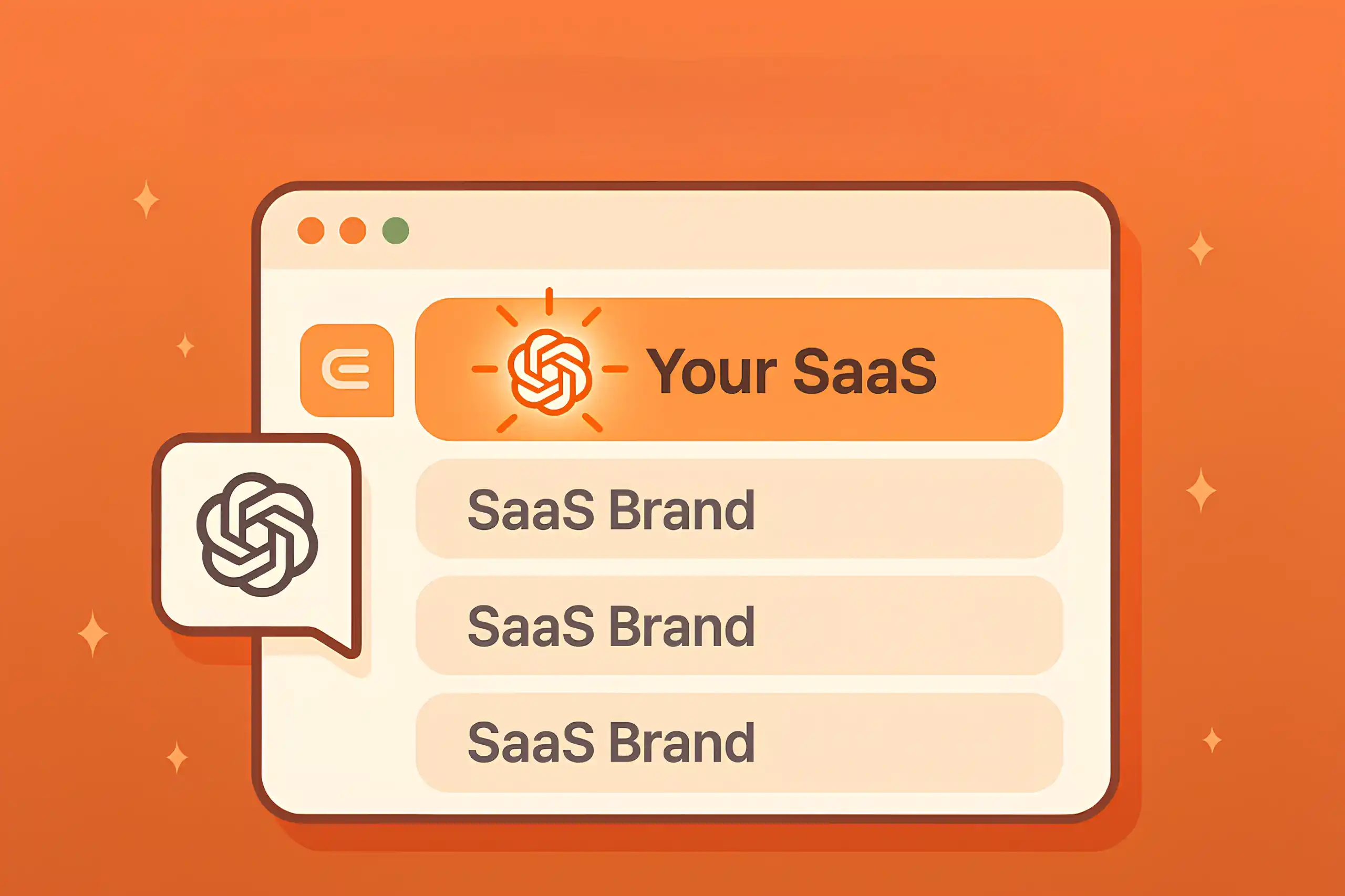
So focus on digital PR, authoritative mentions, and maintaining entity consistency across your organization’s schema and LinkedIn profiles.
DeepSeek’s algorithms rely on multilingual and technical content, especially in simplified Chinese and English. If your SaaS targets Asian markets or global tech users, offering bilingual versions of your content gives a strong advantage.
DeepSeek also favors structured documentation, datasets, and API explanations, so optimizing your product docs and changelogs can help your brand appear in technical recommendations or summaries.
Also read: DeepSeek: Expert Review, Use Cases, and Competitor Comparison
Perplexity is built around citation transparency; it loves structured, well-referenced, and original content. To get visibility there, publish blog posts that include credible references and in-depth comparisons.
Perplexity often cites pages that connect ideas across multiple authoritative sources, so having outbound links to top resources (not just internal links) helps. It also tends to favor FAQ and “explainer” style content, especially when formatted cleanly and supported by schema.
Related article: Programmatic SEO for SaaS
Gemini prioritizes pages with strong entity connections to Google’s Knowledge Graph. For SaaS brands, this means tightening up your About page, making sure your founder and company entities are connected across Google Business Profile, LinkedIn, and media references.
Keep your topical clusters tight; Gemini uses context from related pages. Also, make sure your website performs exceptionally well on mobile and Lighthouse metrics; Gemini’s system (especially through AI Overviews) mirrors Google’s ranking logic more closely than others.
Grok mostly relies on X (Twitter) data and engagement signals. If your SaaS brand is active on X, use that advantage; publish insights, data-driven threads, and product updates that attract engagement and brand mentions. Hashtags, consistent content tone, and community participation all help.
Grok favors conversational content and real-time discussions, so being part of public threads around your niche gives it fresh reasons to associate your brand with expertise.
Copilot inherits Bing’s core indexing logic but builds upon it with Microsoft platform signals. That means your brand visibility in LinkedIn articles, Microsoft Start news, and even GitHub repositories can contribute.
If your SaaS integrates with Microsoft tools or has technical documentation hosted on GitHub, optimize those descriptions and README files with consistent branding and structured context. Copilot often summarizes from these sources, not just from your main website.
Google’s AI Overviews are probably the most unpredictable piece of the search landscape right now (At least for me), but they follow a clear pattern once you’ve studied them closely.
Unlike traditional organic listings, AI Overviews don’t simply pick the answer from the highest-ranking pages. They extract information from pages Google fully understands, trusts, and considers contextually complete.
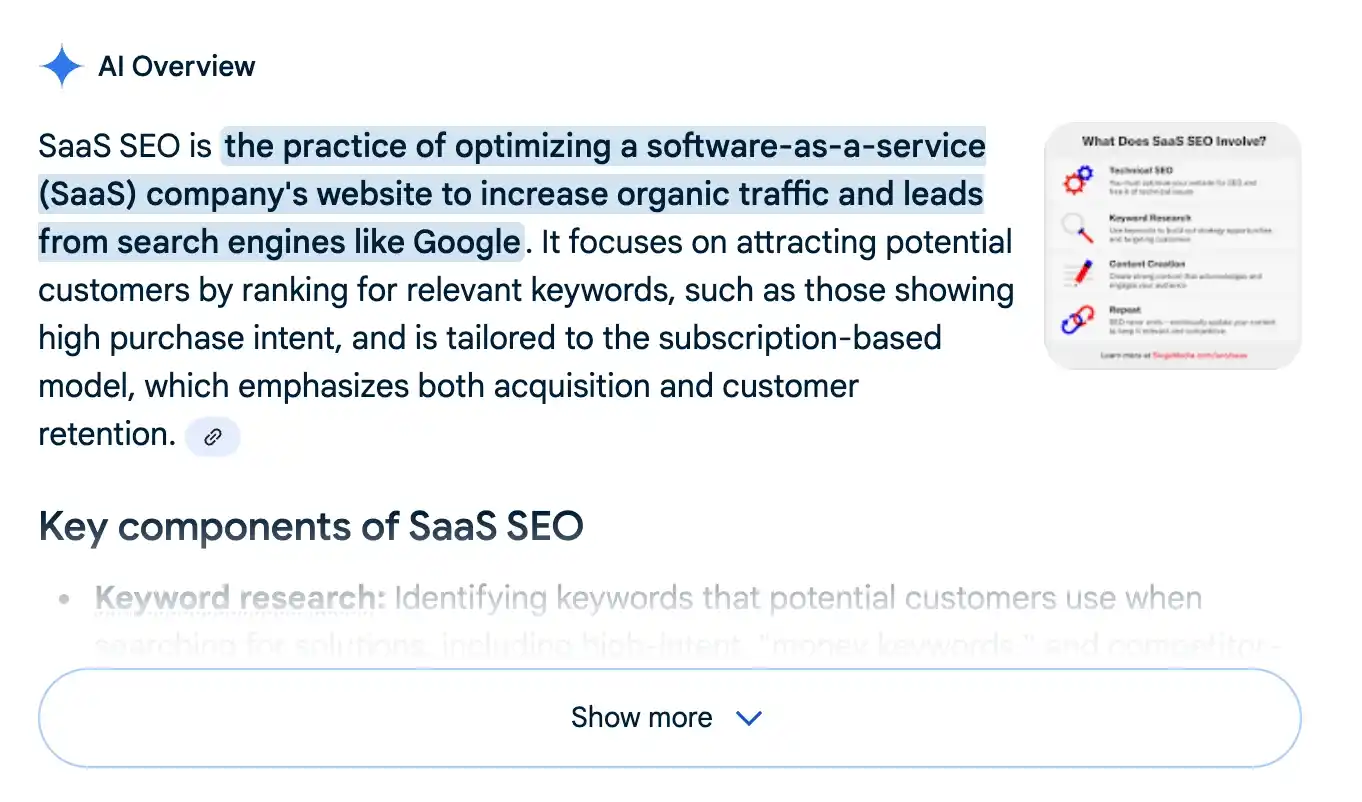
That’s why optimizing for AI Overviews requires a deeper foundation of strategy beyond standard on-page SEO.
A few tips from me:
Instead of stuffing keywords, structure your pages around complete intent. For example, if your SaaS offers a team productivity platform, cover every angle of that intent: how it works, who it’s for, alternatives, and performance outcomes, all in one place.
Next, AI Overviews favor content that can be easily parsed into small, factual snippets. Break up your SaaS articles with clear subheadings, short definitions, and bullet-style explanations that summarize complex ideas in 1–2 sentences.
Google often uses supporting content from YouTube, PDF documents, and Google Drive-linked files. For SaaS companies, that means your technical documentation, case studies, or how-to videos could be the very sources AI Overviews summarize.
Make sure those assets are crawlable, indexed, and consistent with your main product messaging.
Finally, AI Overviews rely on pages that read like mini knowledge bases: authoritative, sourced, and formatted in a way that’s easy to cite.
So, you can link out to credible third-party sources, display data transparently, and cite original insights wherever possible. Google wants to reference content that feels trustworthy enough to appear in a summary, not a sales pitch.
Pro tip: Use Search Console and AI Overview testing tools to identify which of your queries are triggering AI summaries. When you see an Overview appear for a query you target, study which domains Google is citing, then structure your page more like those.
From my experience, sites that get quoted in Overviews usually have very tight internal linking and well-defined knowledge sections.
If you’re looking for a detailed content audit checklist for your SaaS, where I break down how to fix content gaps and strengthen your E-E-A-T signals, check out my complete guide.
Not directly, but you can strongly influence it. LLMs don’t rewrite reality; they summarize what they’ve seen from credible, consistent sources.
So if your brand has structured, trustworthy information across multiple high-authority platforms (like your website, LinkedIn, Clutch, and major publications), that’s what the model learns to associate with you.
Absolutely, but not in the same way they matter for Google. Backlinks are less about “link juice” now and more about credibility signaling.
LLMs prioritize brands that appear across authoritative, diverse, and topic-relevant sources. A single backlink from a respected SaaS or tech publication is more valuable than dozens of average ones.
From my own experience, LLMs tend to favor brands that appear consistently in editorial backlinks, such as interviews, product comparisons, or thought-leadership mentions, rather than bulk link placements.
LLMs don’t read every page; they focus on what best represents your expertise. The most important pages for indexing and recognition are your About page, Product or Features page, Case Studies, and any educational hubs or guides where your brand demonstrates knowledge.
Unlike Google, which crawls everything, LLMs need confidence before referencing you. That confidence often starts with your About page (entity data and brand context) and Product page (what your SaaS does).
Case studies and blog hubs show your credibility and depth, which LLMs use to infer expertise.
Startups can win by being sharper, not louder. Large SaaS brands often produce broad, generic content that’s safe but uninspired. LLMs are evolving to favor content that feels unique, accurate, and experience-based.
There’s no perfect analytics tool yet, but a few are starting to fill that gap. Platforms like Allora, BrightEdge, Horizon LLM Tracker, and Perplexity Pro now let you monitor brand mentions and visibility across ChatGPT, Gemini, Copilot, and Perplexity.
They track how often your brand appears in summaries or citations (But, honestly they’re extensive and don’t provide accurate data).
Customer reviews are becoming one of the strongest trust signals for LLMs. They don’t just affect your conversion rate; they affect how AI systems perceive your reliability.
LLMs extract patterns from these reviews: tone, frequency, and authenticity, to assess your reputation. For SaaS brands, consistent positive reviews across multiple third-party platforms can tip the scales in your favor, especially in B2B queries where trust is very important.